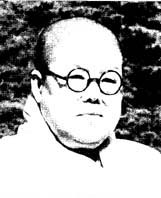Kim Iryeop facts for kids
Quick facts for kids
Kim Iryeop
|
|
|---|---|

Kim Iryeop c. 1935
|
|
| Born | 28 April 1896 Yonggang, Korean Empire |
| Died | 1 February 1971 (aged 74) Sudeoksa, South Korea |
| Occupation | Poet, journalist, writer, painter, feminist activist, bhikṣuṇī |
| Nationality | Korean Empire, South Korea |
| Period | 1896–1971 |
| Genre | Buddhist philosophy, women's rights, New Women (신여성), poetry, novel, essay, drama |
| Spouse | Yi Noik (1919 - 1921, divorced) Ha Yunshil (1929 - 1930, divorced) |
Kim Iryeop (born Kim Wonju) was an important Korean writer, journalist, and activist. She was born on April 28, 1896, and passed away on May 28, 1971. Later in her life, she also became a Buddhist nun. She used the name Iryeop, which was her dharma name.
Contents
Her Life Story
Kim Iryeop was born in a northern part of the Korean Empire. Her father was a Methodist pastor. She grew up to be a modern thinker in literature and Buddhism. She also became a strong voice for women's rights.
After her parents passed away, she finished her early schooling. Then, she moved to Seoul to attend Ehwa Hakdang from 1913 to 1915. This school later became Ewha Girls' High School. In 1915, she continued her studies at Ewha Hakdang, which is now Ewha Womans University. She finished her education there in 1918.
Starting a New Journal
In 1919, Iryeop traveled to Japan to study more. She returned to Korea in 1920. When she came back, she started a journal called New Woman (Korean: 신여자; Hanja: 新女子). This was a very special journal. It is known as the first women's journal in Korea that was created by women, for women. Its goal was to promote important issues for women.
Her Impact on Society
Kim Iryeop greatly influenced Korean literature during her time. She wrote about activities that supported the women's liberation movement. This was a big reason why she founded New Woman. Over the years, she published many critical essays, poems, and short novels. These writings often talked about women's struggles against the strict traditions of Korea under Japanese rule. Her works appeared in major Korean newspapers like The Dong-a Ilbo and The Chosun Ilbo. They were also in literary magazines such as Kaebyeok and Chosun Mundan.
Becoming a Buddhist Nun
In 1933, Iryeop became a Buddhist nun. She moved to Sudeoksa temple in 1935. She lived there for the rest of her life until she passed away.
Her Writings
Kim Iryeop wrote many different kinds of works, including books, novels, and essays. Her writings often explored deep thoughts and women's experiences.
Books She Wrote
- Reflections of a Zen Buddhist Nun (어느 수도인의 회상, 1960)
- Having Burned Away My Youth (청춘을 불사르고, 1962)
- In Between Happiness and Misfortune (행복과 불행의 갈피에서)
Novels She Wrote
- 《Revelation(啓示)》(계시, 1920)
- 《I go: An agape and a sob story》(나는 가오: 애연애화, 1920)
- 《A girl's death》(어느 소녀의 사, 1920)
- 《Hye-Won》(혜원, 1921)
- 《Death of Chaste love》(순애의 죽음, 1926)
- 《Self-awareness》(자각, 1926)
- 《Love》(사랑, 1926)
- 《Dress-up》(단장, 1927)
Essays She Wrote
- 《Let youth last forever》(청춘을 영원하게, 1977)
- 《When the flowers fall, My eyes get cold》(꽃이 지면 눈이 시려라, 1985)
- 《Left behind attachment》(두고간 정, 1990)
- 《What have you become to me》(당신은 나에게 무엇이 되었삽기에, 1997)
English Translation
You can find some of Kim Iryeop's works translated into English. For example, Reflections of a Zen Buddhist Nun: Essays by Zen Master Kim Iryop was translated by Jin Y. Park in 2014.
See also
 In Spanish: Kim Iryeop para niños
In Spanish: Kim Iryeop para niños
- Sudeoksa
- Mangong
- Chunseong

